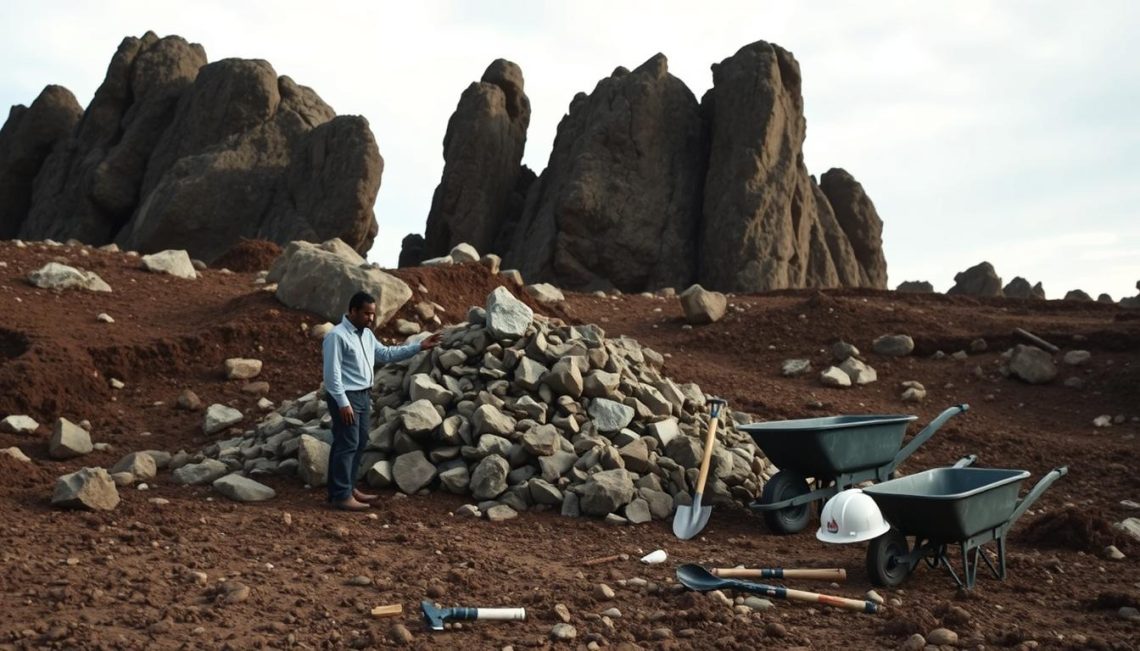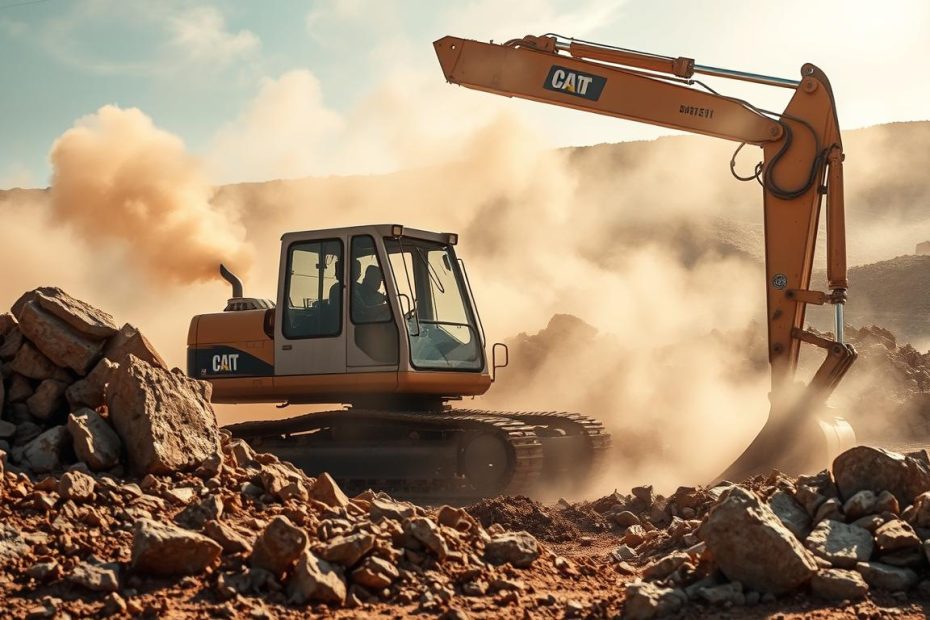Gardening can be a therapeutic hobby, but dealing with rocky terrain can be frustrating. We understand the struggle of trying to cultivate a thriving garden in soil filled with unwanted rocks.
Effective soil preparation is crucial for a successful gardening experience. In this article, we’ll guide you through the process of removing rocks and preparing your soil for planting.
With our expertise, you’ll learn practical tips to make your gardening journey smoother. By the end of this article, you’ll be equipped with the knowledge to tackle rocky soil and create a fertile ground for your plants to flourish.
Why Rocks in Soil Are Problematic
The presence of rocks in soil is more than just a nuisance; it can significantly affect the health and productivity of your garden. Rocks can interfere with the soil’s structure and its ability to support plant life.
Impact on Plant Growth and Root Development
Rocks in the soil can hinder root growth by creating obstacles for roots to expand and absorb necessary nutrients and water. This can lead to stunted plant growth and reduced yields.
Difficulties in Garden Maintenance and Equipment Damage
Rocks can also make garden maintenance more challenging. They can damage gardening tools and equipment, such as rototillers and lawn mowers, by causing wear and tear or even breakage. This not only increases maintenance costs but also makes gardening more labor-intensive.
Assessing Your Rocky Soil Situation
Evaluating the condition of your rocky soil is essential for successful garden maintenance. Before you start removing rocks, it’s crucial to understand the extent of the issue.
Determining Rock Size and Density
The size and density of rocks in your soil will significantly influence the removal method you choose. Larger rocks may require heavy machinery or specialized tools, while smaller rocks can be removed with simpler garden tools.

Evaluating Soil Depth and Area Size
Assessing the depth of your soil and the size of the area you need to clear will help you plan your rock removal approach more effectively. This evaluation is a critical step in soil preparation for gardening.
Effective Methods to Remove Rocks From Soil
Effective rock removal techniques can make a significant difference in your gardening experience. Removing rocks from your soil can be a daunting task, but with the right methods, you can achieve a rock-free garden that promotes healthy plant growth and is easier to maintain.
Hand-Picking for Small Areas
For small garden areas, hand-picking rocks can be an effective and straightforward method. Simply bend down, pick out the rocks, and dispose of them or repurpose them elsewhere in your garden. This method is particularly useful for areas with loose soil and easily accessible rocks.
Hand-picking is also a good option for gardens with sensitive plants that might be damaged by more invasive rock removal techniques. By manually removing rocks, you can ensure that your plants remain undisturbed.
Using Garden Tools: Rakes, Hoes, and Trowels
Garden tools like rakes, hoes, and trowels are invaluable for removing rocks from larger areas or for more stubborn rocks. A garden rake can be used to loosen and collect rocks from the surface, while a hoe can help break up the soil to uncover buried rocks.
Trowels are handy for digging and removing rocks from deeper soil layers. By using these tools in combination, you can efficiently clear your garden of unwanted rocks.
Soil Sifting and Screening Techniques
For more extensive rock removal, soil sifting and screening techniques are highly effective. Using a soil sifter or screen, you can separate rocks from the soil, leaving you with a rock-free gardening medium.
This method is particularly useful for large garden beds or areas where you’re planning to grow root vegetables or other plants that require deep, rock-free soil.
Repurposing Collected Rocks for Garden Features
Instead of discarding the rocks you remove, consider repurposing them as unique features in your garden. Rocks can be used to create decorative borders, pathways, or even rock gardens.
By repurposing collected rocks, you can add visual interest to your garden while reducing waste. This approach not only enhances your garden’s aesthetic but also contributes to a more sustainable gardening practice.
Creating and Maintaining Rock-Free Garden Beds
Now that you’ve removed the rocks from your soil, it’s time to focus on soil preparation and garden maintenance to ensure a thriving garden. Proper soil preparation is crucial for healthy plant growth, and maintaining a rock-free environment is key to this process.
To maintain your rock-free garden beds, regular garden maintenance is necessary. This includes monitoring your soil for any new rock accumulation and taking steps to prevent it. Mulching and using a weed barrier can help reduce the need for frequent rock removal.
Effective rock removal is just the first step in creating a beautiful and productive garden. By following these tips on soil preparation and ongoing garden maintenance, you’ll be able to enjoy a bountiful harvest and a visually appealing outdoor space with minimal upkeep.
